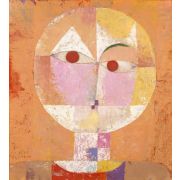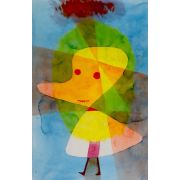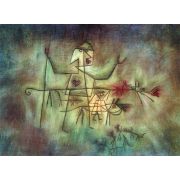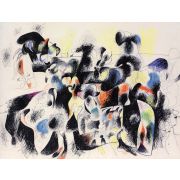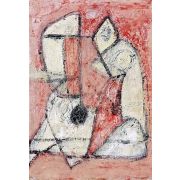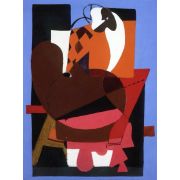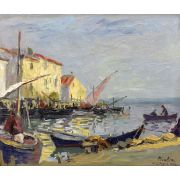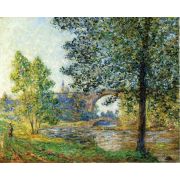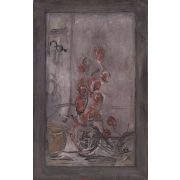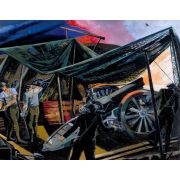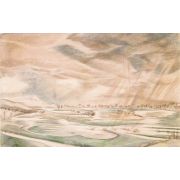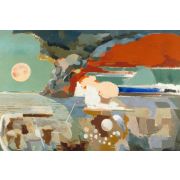
Surrealism
Surrealism
1 to 7 out of 7 artists
Paul Klee
1879 -1940, Swiss / Abstract Art , Expressionism , and Surrealism, 325 works
Arshile Gorky
1904 -1948, American / Abstract Expressionism and Surrealism, 158 works
Francis Picabia
1879 -1953, French / Surrealism and Abstract Art, 24 works
Jindřich Štyrský
1899 -1942, Czech / Surrealism, 7 works
Alberto Giacometti
1901 -1966, Swiss / Surrealism and Expressionism, 1 work
Pierre Roy
1880 -1950, French / Surrealism, 1 work
Paul Nash
1889 -1946, British / Modernism , Surrealism , and Abstract Art, 161 works
1 to 7 out of 7 artists
The Surrealists wanted to access the power of the imagination by tapping into the unconscious. The Surrealists looked down on rationalism and literary realism and were heavily influenced by psychoanalysis. They thought the rational mind stifled the power of the imagination by putting taboos on it. Karl Marx also influenced them, and they believed that reason could show the contradictions in everyday life and start a revolution. Their focus on the power of the individual imagination puts them in the Romantic tradition. Still, unlike their predecessors, they thought that revelations could be found on the street and in everyday life. The surrealists' desire to tap into the unconscious mind and their interest in myth and primitivism influenced many later movements, and the style still does.
Surrealism came from the Dada movement, which was also a protest against the comfort of the middle class. But art inspiration came from many different places. Some of the Surrealists were most influenced by Giorgio de Chirico, who was their contemporary and also used strange images put together in unfamiliar ways. They were also interested in artists from the recent past, like Gustave Moreau, Arnold Bocklin, Odilon Redon, and Henri Rousseau, who were interested in naive or fantastical imagery. Even Renaissance artists like Giuseppe Arcimboldo and Hieronymous Bosch gave the Surrealists ideas. They didn't care too much about things like line and color but instead felt compelled to create what the Surrealists thought of as "real."
The Surrealist movement started as a literary group that was very close to Dada. It grew out of the collapse of Dada in Paris, when André Breton's desire to give Dada a purpose clashed with Tristan Tzara's dislike of authority. Breton, sometimes called the "Pope" of Surrealism, started the movement when he published The Surrealist Manifesto in 1924. But Guillaume Apollinaire came up with the word "surrealism" in 1917. He used it in the program notes for the ballet Parade, which was written by Pablo Picasso, Leonide Massine, Jean Cocteau, and Erik Satie.
About the same time Breton published his first manifesto; the group started putting out the journal La Révolution surréaliste. It was mostly about writing, but it also had copies of art by artists like de Chirico, Max Ernst, André Masson, and Man Ray. Publication continued until 1929.
In 1924, the Bureau for Surrealist Research, also known as the Centrale Surréaliste, was also set up in Paris. This was a loosely connected group of writers and artists who got together and did interviews to "gather as much information as possible about forms that might express the unconscious activity of the mind." The Bureau, which Breton led, made two archives. One was for dream images, and the other was for information about social life. At least two people worked in the office every day. One person greeted visitors, and the other wrote their comments and observations, which were added to an archive. In January 1925, the Bureau made public a document signed by 27 people, including Breton, Ernst, and Masson, that said they wanted to change the world.
Surrealism had a lot in common with Dada's rejection of reason. The first Parisian Surrealists used art to escape violent political situations and deal with their unease about the uncertain world. Using fantasy and dream imagery, artists did works in various media that showed their inner thoughts in strange, symbolic ways. This helped them find their fears and analytically deal with them through art.
Surrealism started in France, but you can see traces of it in art worldwide. During the 1930s and 1940s, when there was a lot of political turmoil and a second world war, many artists got caught up in the idea that human civilization was in crisis and about to fall apart. During World War II, many Surrealists moved to the United States. This made their opinions known to more people. After the war, however, the group's views were tested by the rise of Existentialism, which, like Surrealism, praised individualism but was based on reason more than Surrealism. In the arts, the Abstract Expressionists took some ideas from Surrealism and made them their own by coming up with new ways to show the unconscious. Breton became increasingly interested in revolutionary politics as the movement's primary goal. The result was that the original group of artists split into smaller groups. Roberto Matta and the other Bretons thought that art was always political. Others, like Yves Tanguy, Max Ernst, and Dorothea Tanning, stayed in America to escape Breton. Salvador Dal also went to Spain because he thought the individual was the most important thing in art.
In 1936, a show called "Fantastic Art, Dada, Surrealism" was held at the Museum of Modern Art in New York. Many American artists were very moved by it. Some people, like Jackson Pollock, started to try out automatism and images that seemed to come from the unconscious. These experiments led to his "drip" paintings, which he named after how the paint fell on the canvas. In the same way, people say that Robert Motherwell was "caught between the two worlds" of abstraction and automatism.
Because of European political upheaval, a new vanguard that favored abstraction over Salvador Dal's "hand-painted dreams" grew up in New York instead of Paris. Peggy Guggenheim's 1942 show of Surrealist-influenced artists (Rothko, Gottlieb, Motherwell, Baziotes, Hoffman, Still, and Pollock) and European artists (Miró, Klee, and Masson) shows how quickly Surrealist ideas spread through the New York art community.
People often think of the Surrealists as a tight-knit group of men, and their art often shows women as wild "others" to the world of culture and reason. Feminist art historians have since changed this idea. They have shown that many women in the Surrealist group, especially in the 1930s, have looked at how gender stereotypes are used in much of Surrealist art. Several books and exhibitions by feminist art critics like Dawn Ades, Mary Ann Caws, and Whitney Chadwick have been devoted to this topic.
Most of the male Surrealists, especially Man Ray, Magritte, and Dal, focused on and distorted the female form and used women as muses, just as male artists had done for hundreds of years. However, female Surrealists like Claude Cahun, Lee Miller, Leonora Carrington, and Dorothea Tanning tried to fix the problems with Freudian psychoanalysis, which often made women seem like monsters and less than men. So, many Surrealist women tried on men's clothes and drew themselves as animals or mythical creatures.
Surrealist women from Britain did a lot of exciting things. Eileen Agar, Ithell Colquhoun, Edith Rimmington, and Emmy Bridgwater are all excellent examples. The British version of Surrealism focused on how people relate to the natural world around them, especially the sea. Along with Agar, Paul Nash became interested in the object trouvé, usually made up of things found on the beach. The focus on the border where land meets the sea and rocks look like people struck a chord with British identity and, more generally, with Surrealist ideas about bringing together and reconciling opposites.
Many British artists were inspired by the International Surrealist Exhibition, held in London in 1936. The movement took off in Britain, where Roland Penrose and Herbert Read led it. It gave the world-famous artists Leonora Carrington and Lee Miller, and it also influenced the work of Ben Nicholson, Barbara Hepworth, and Henry Moore. Overall, the emphasis on an out-of-the-box imagination and the rejection of standard and logical ways of doing things hit home immediately. This was a great time for art in the UK in general, and the legacy of British Surrealism still affects art in the country today.

